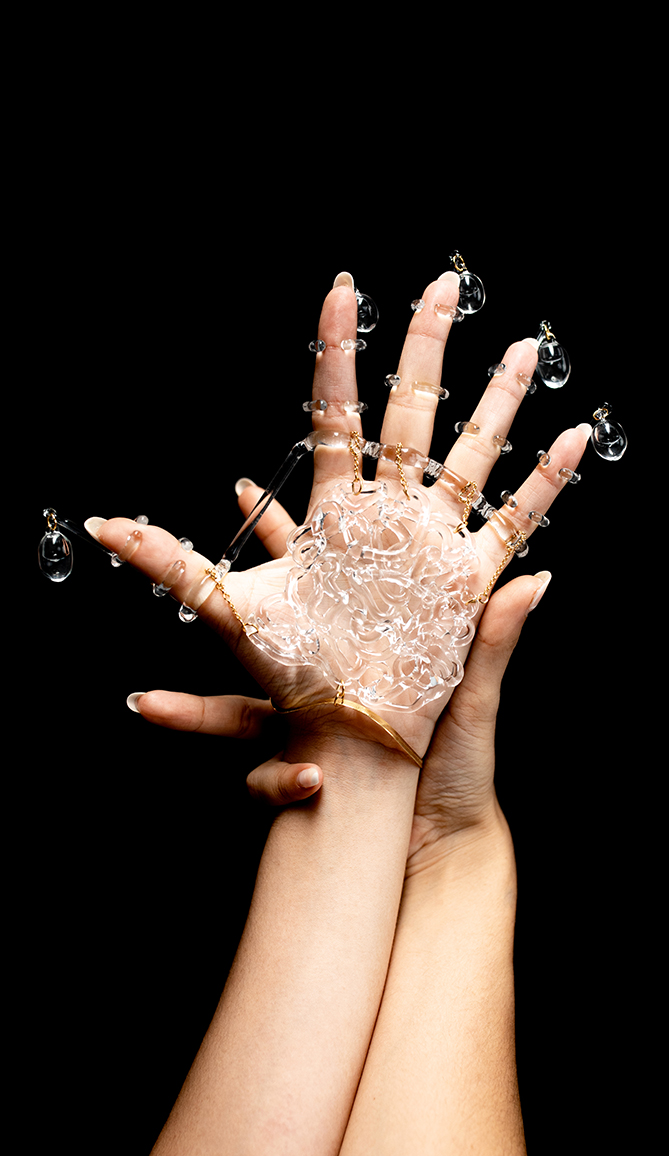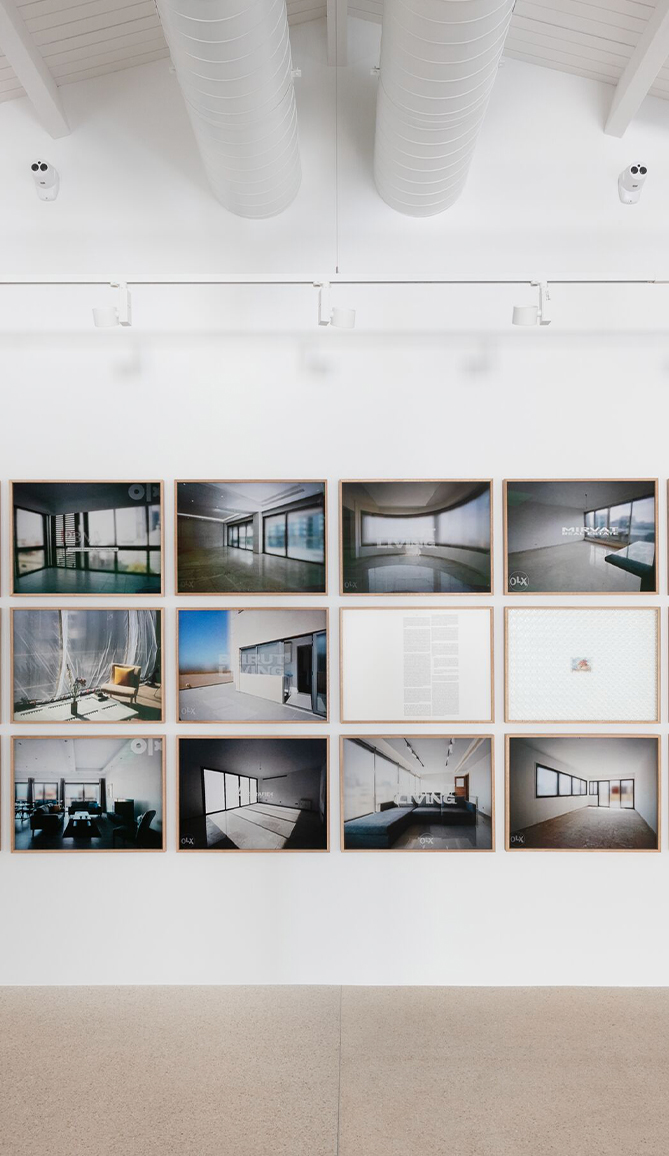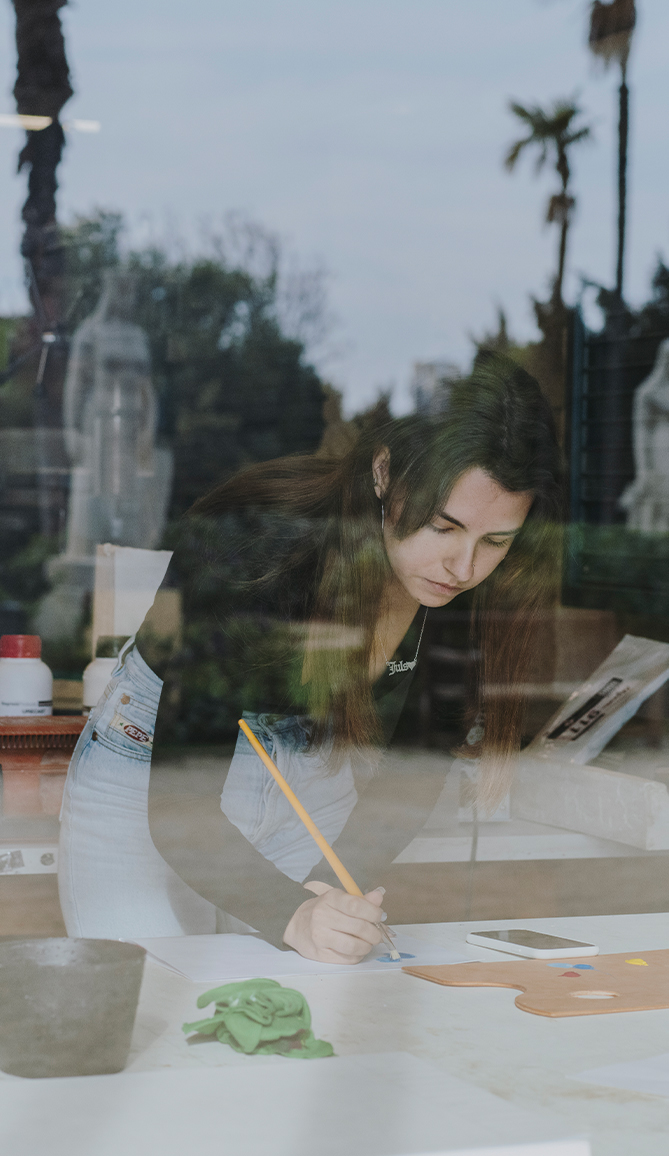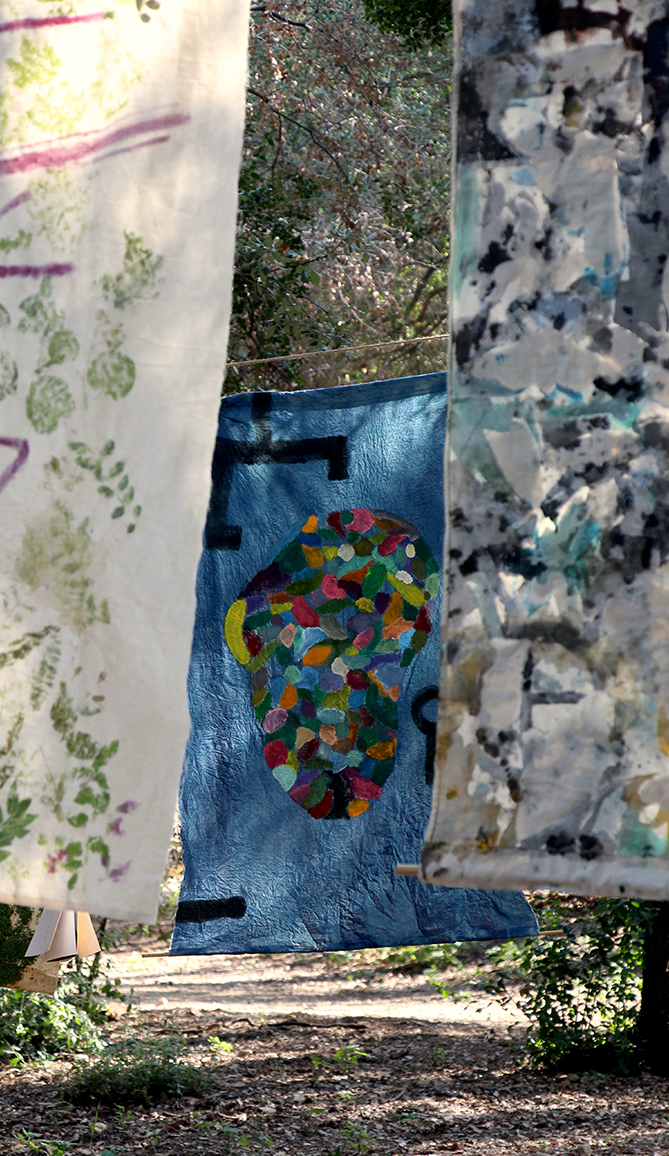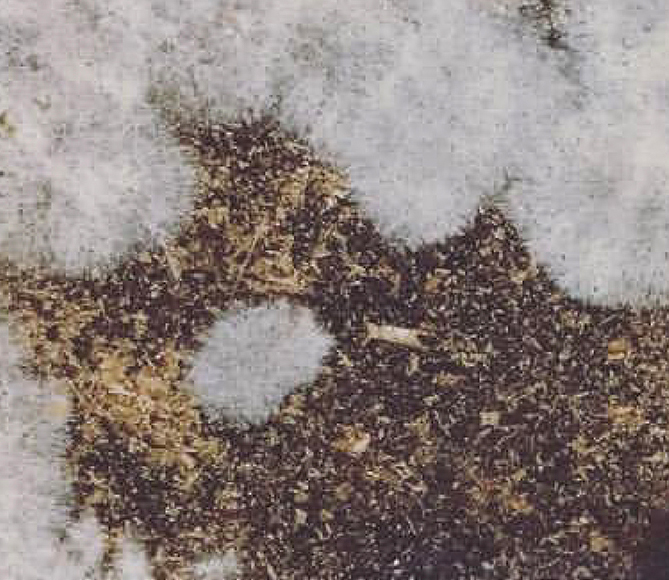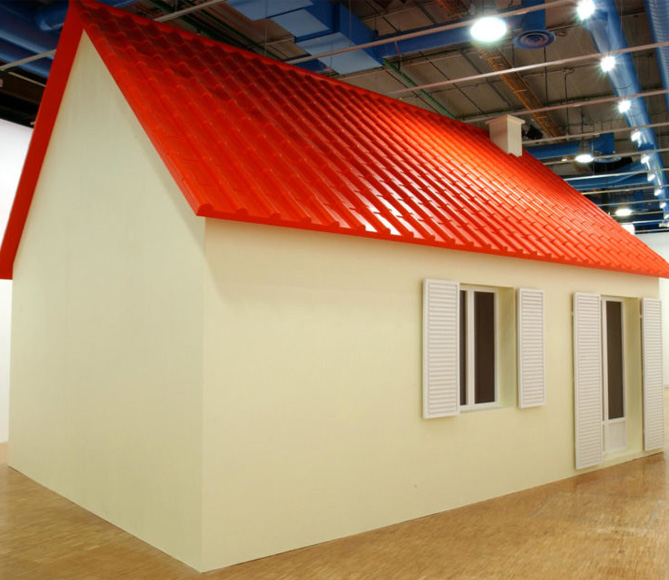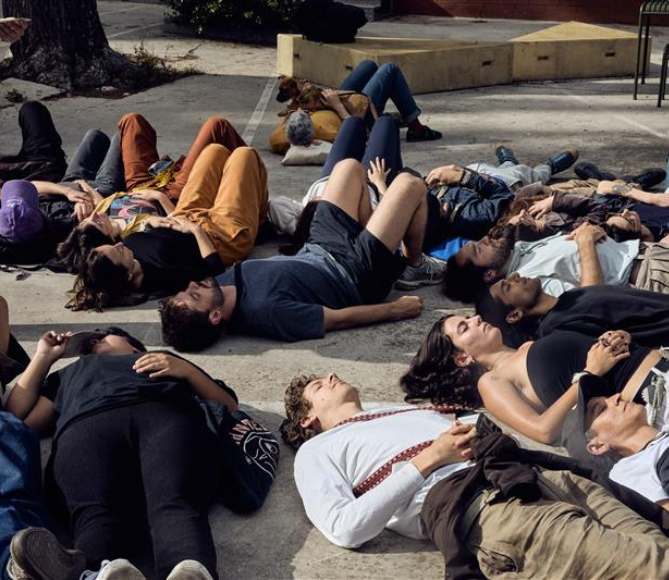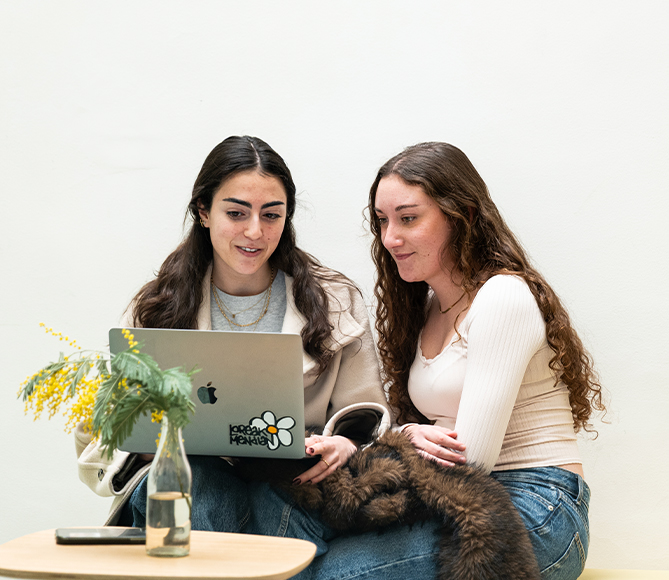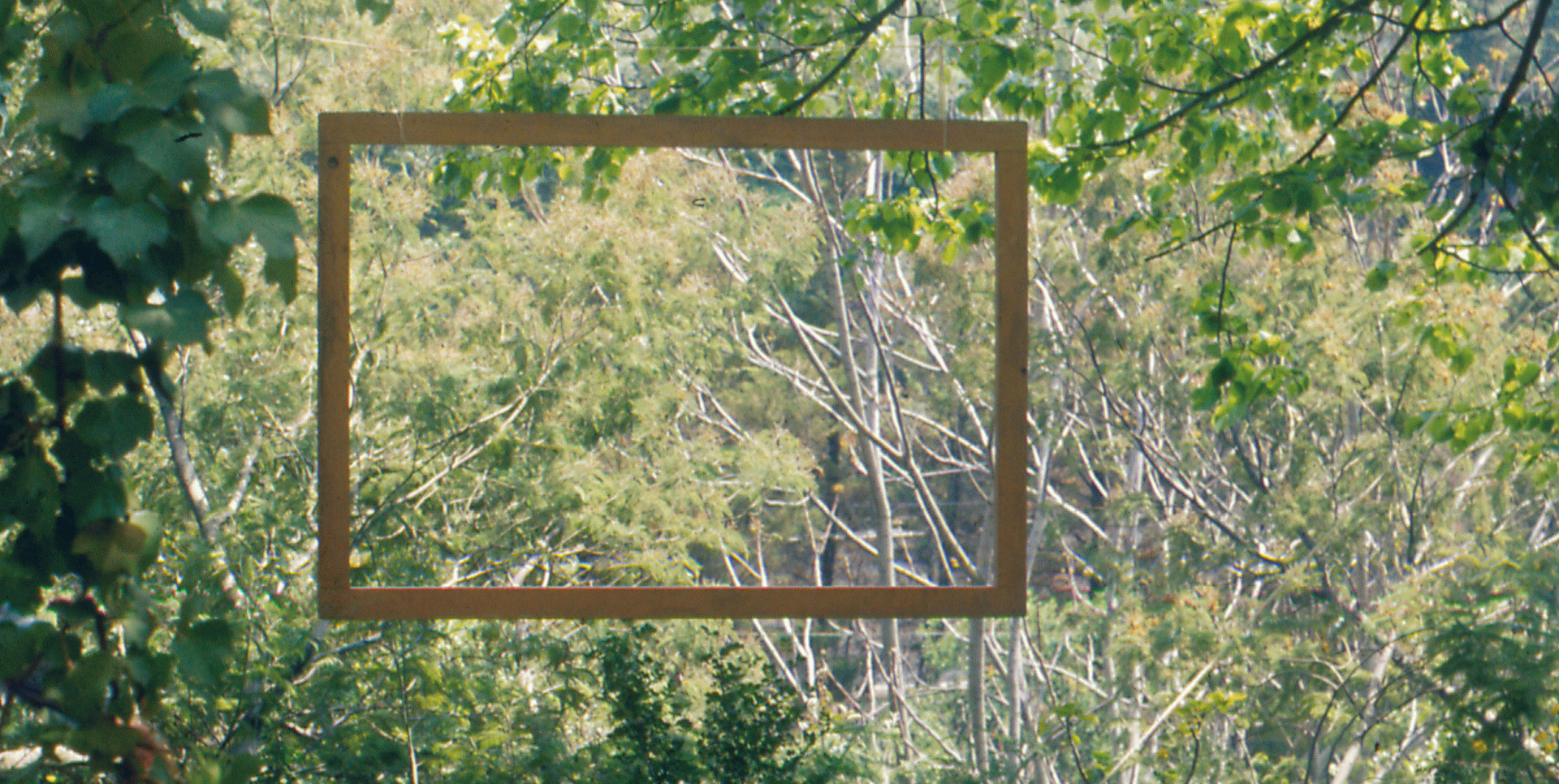An outdoor classroom, 1967-1994
The garden has been vital in EINA's educational programmes, the space that sets the stage for events and performances, conferences and seminars, and classrooms and workshops. Since EINA's beginnings, the garden has also made it possible to teach classes outdoors, following in the footsteps of the modern school that believed being surrounded by nature, in addition to being beneficial for health, stimulated creativity.
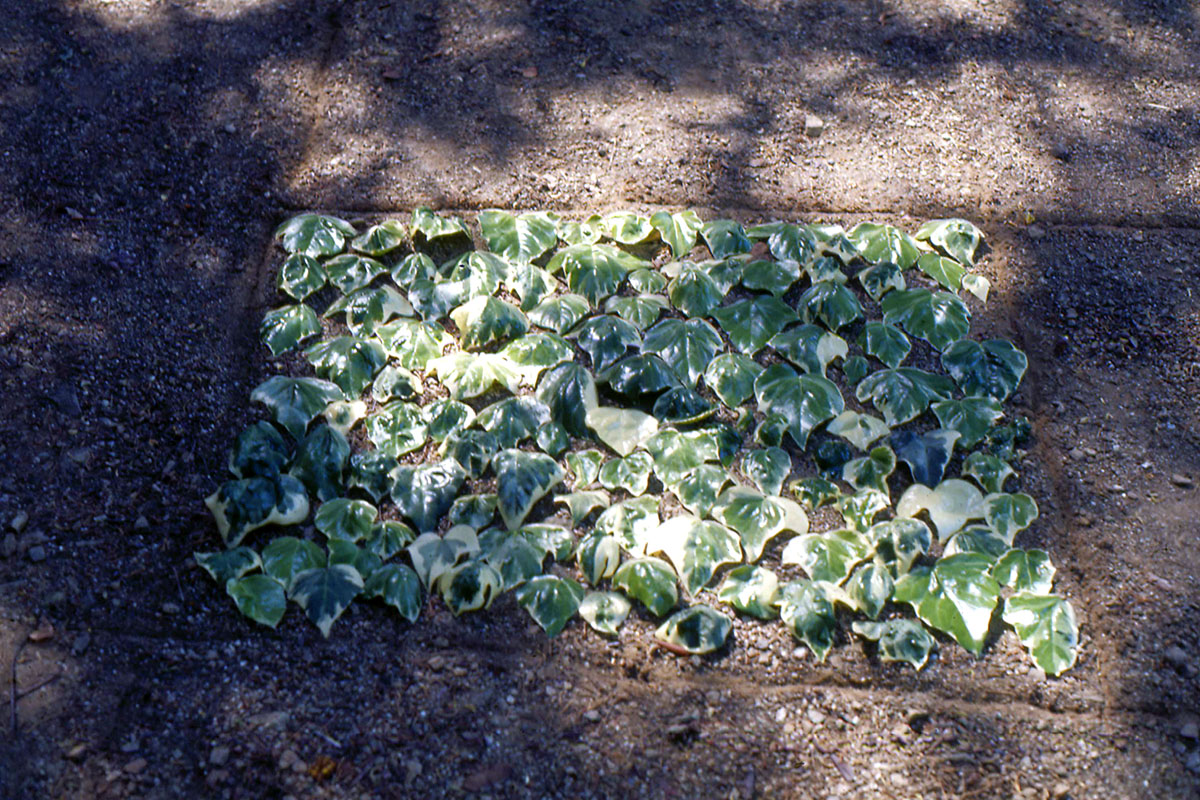
The following are just some of the teaching activities in which the garden has been both the main character and the stage at the same time.
Communication classes
Conceptual art: land art, arte povera, and body art
The artistic activities that EINA led during the seventies were primarily conceptual in nature and form part of the beginnings of Catalan conceptual art. These artistic projects that emerged within the framework of the school form part of the trends in international contemporary art and are, according to Alexandre Cirici (1971), one of the precursors to arte povera and conceptual art in our region. As part of this setting, many collaborating artists and EINA students from the seventies also aided in consolidating the Catalan conceptual movement. Within the context of EINA, different working groups were established which became a constant feature of cultural life in Catalonia at the time. They shared experiences and reflections both within and beyond the school.
During this period, Xavier Olivé taught communication classes to first-year design students at the school. The following details some of the activities that were held as part of this subject.
Land art
Land art closely binds artwork and the landscape. Artworks are created from natural elements such as stones, leaves, branches, or soil, among others, in what can be considered a work of art formed through nature itself. Traces of these transient activities held in the garden remain only in photographs today.
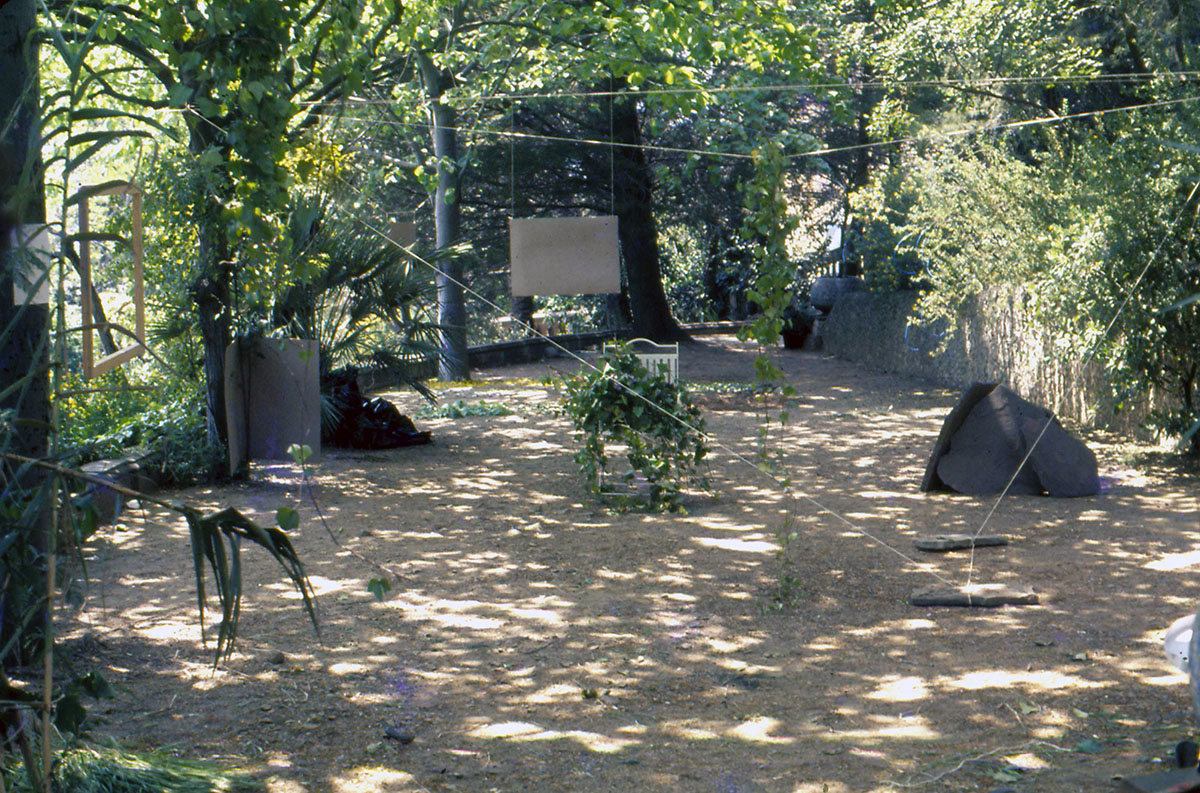
Each student creates their own work which, through interaction with other students, must then be configured as a single work bound together. Students engage with all four elements of nature: fire, water, earth, and air.
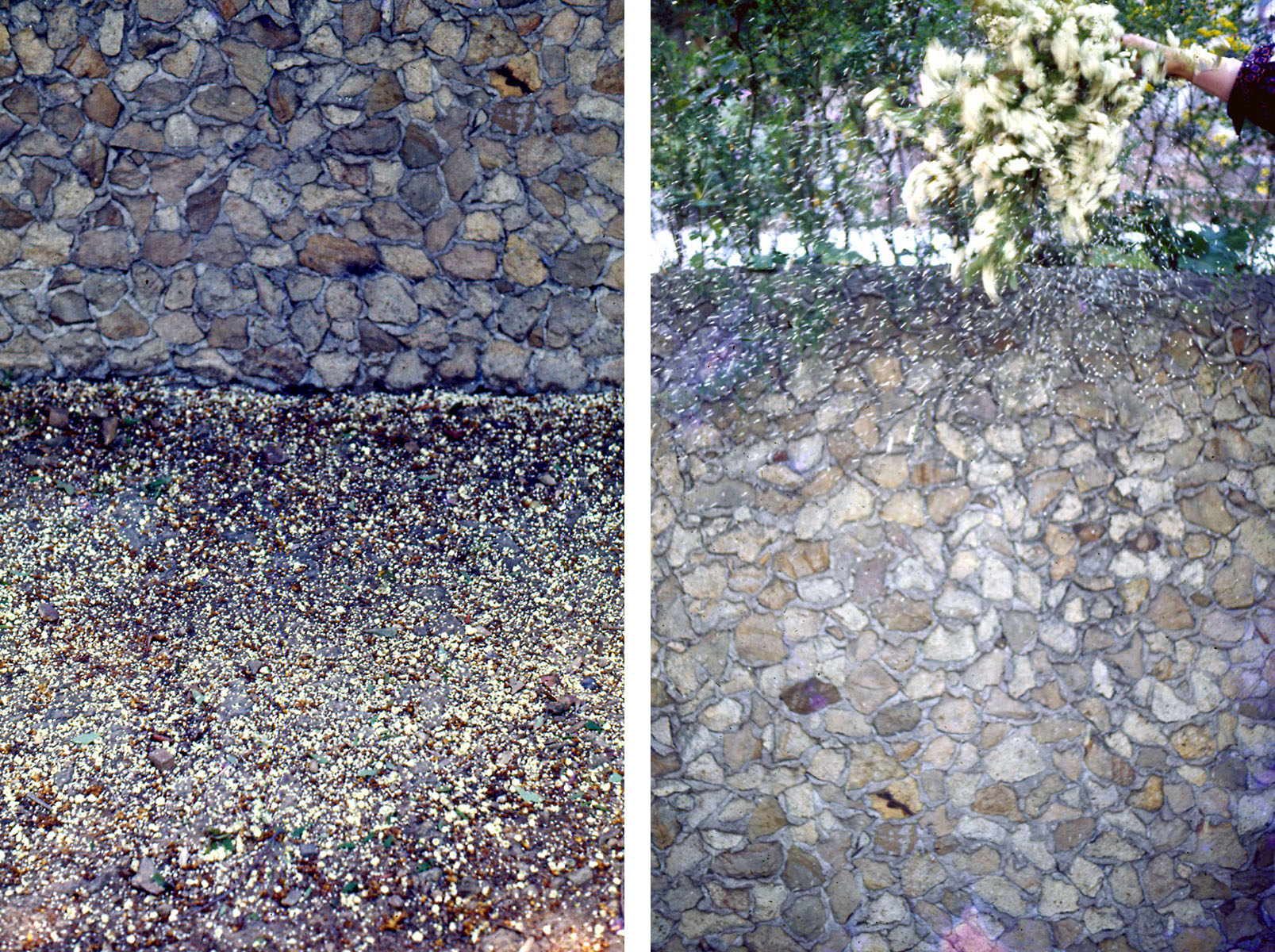
Air through flower petal raindrops.
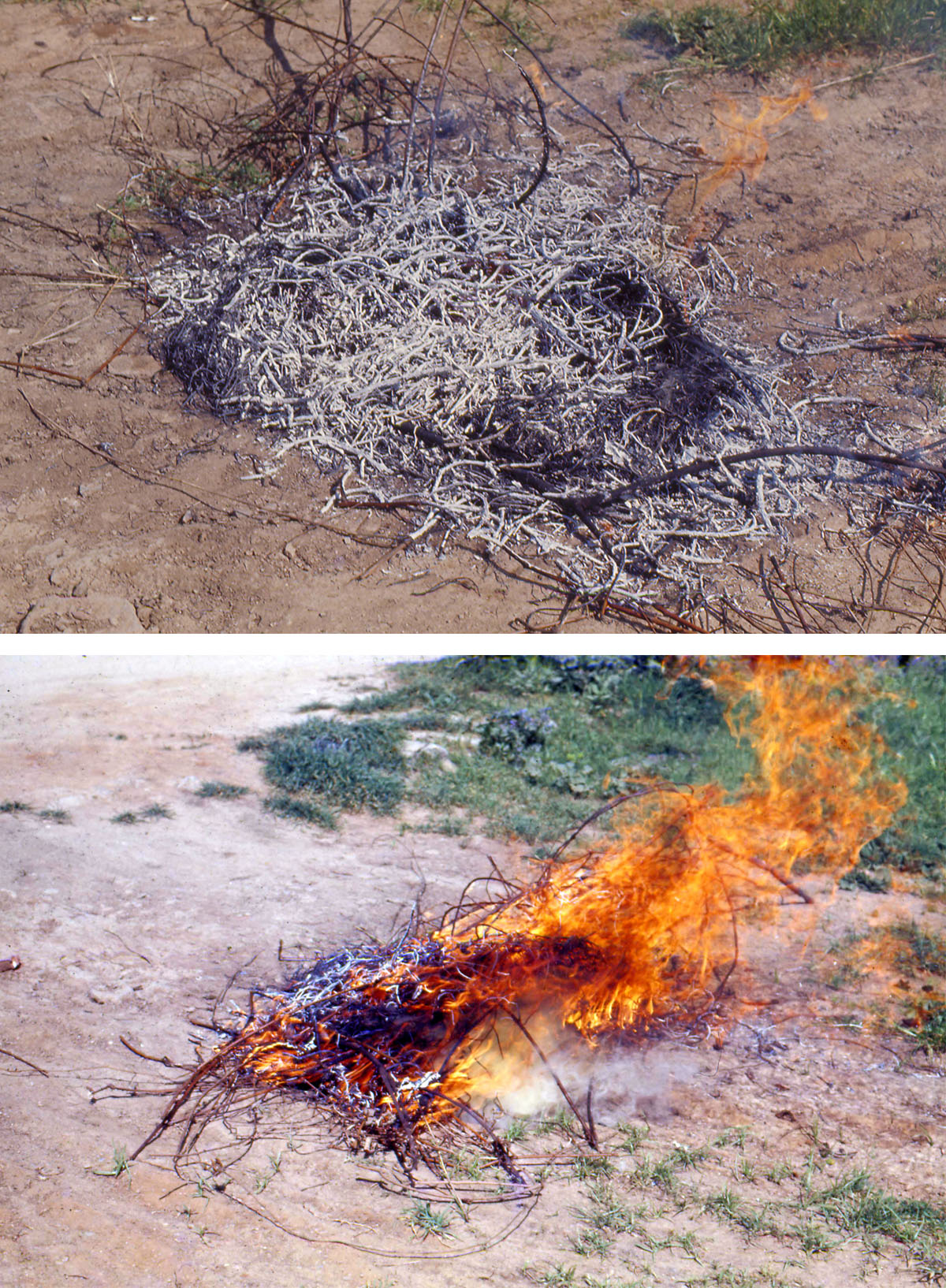
Fire and earth.
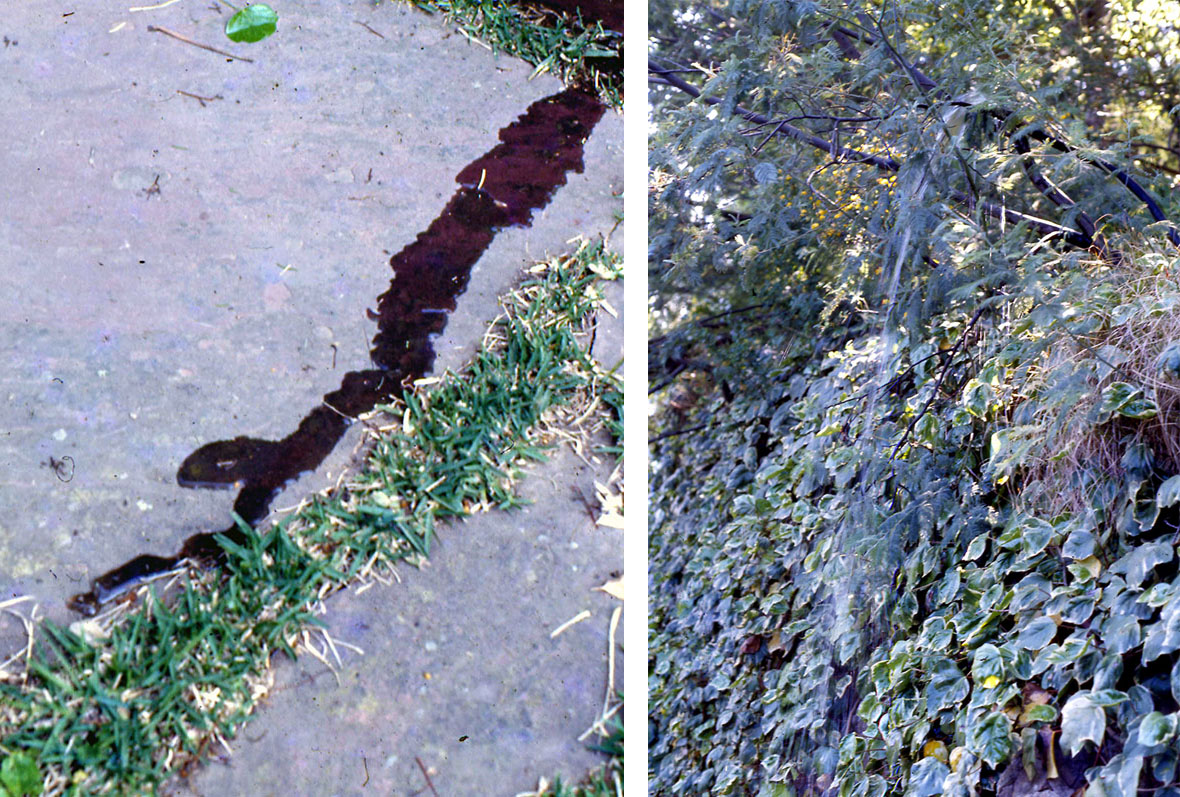
Water
Arte povera
Arte povera, or poor art, employs ordinary and everyday materials that typically have little value. This course asked students to reflect on the shape of objects through manipulating them.
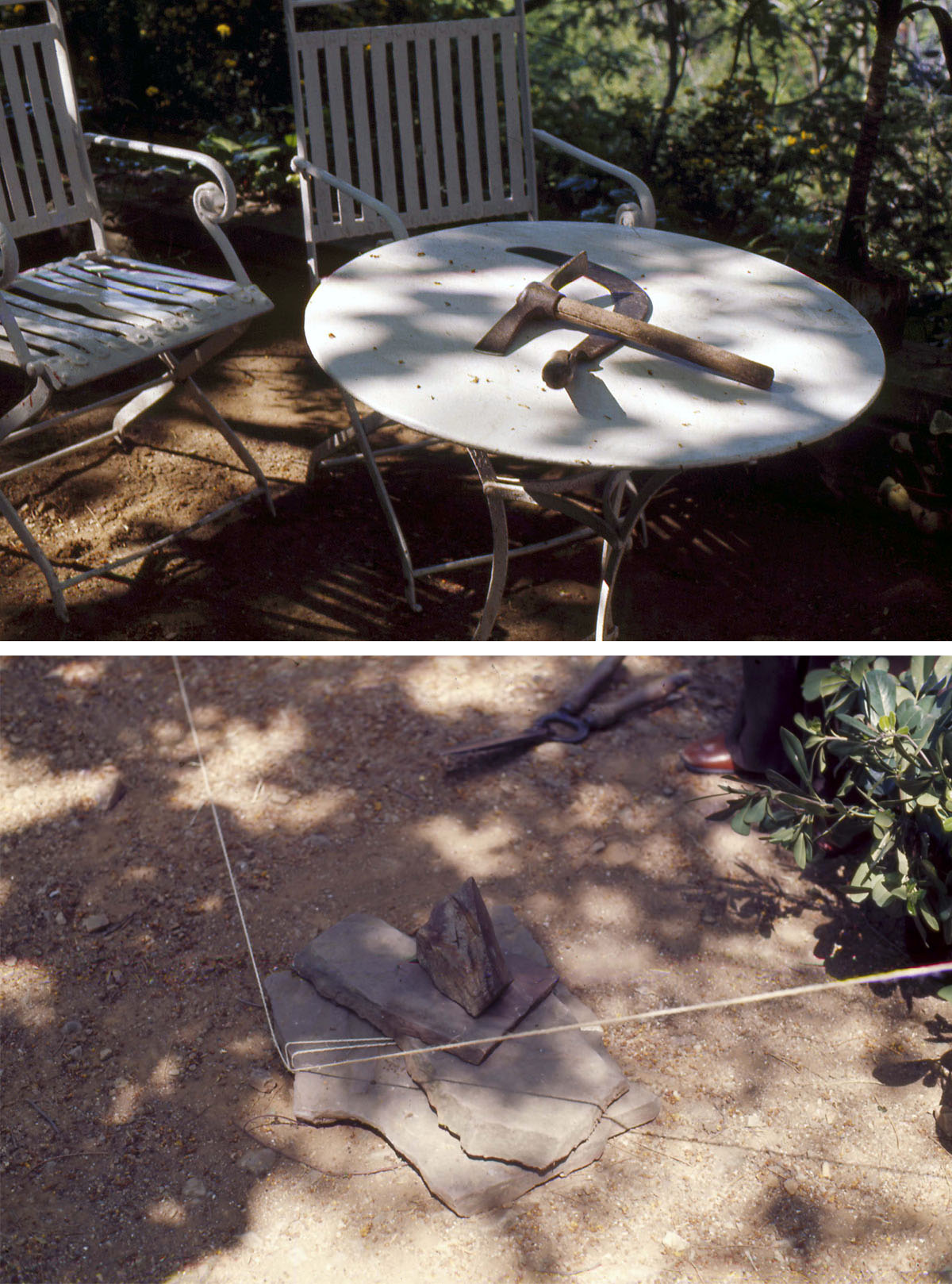
Participants used a variety of elements found in the garden and interacted directly with nature, leaving footprints for instance.
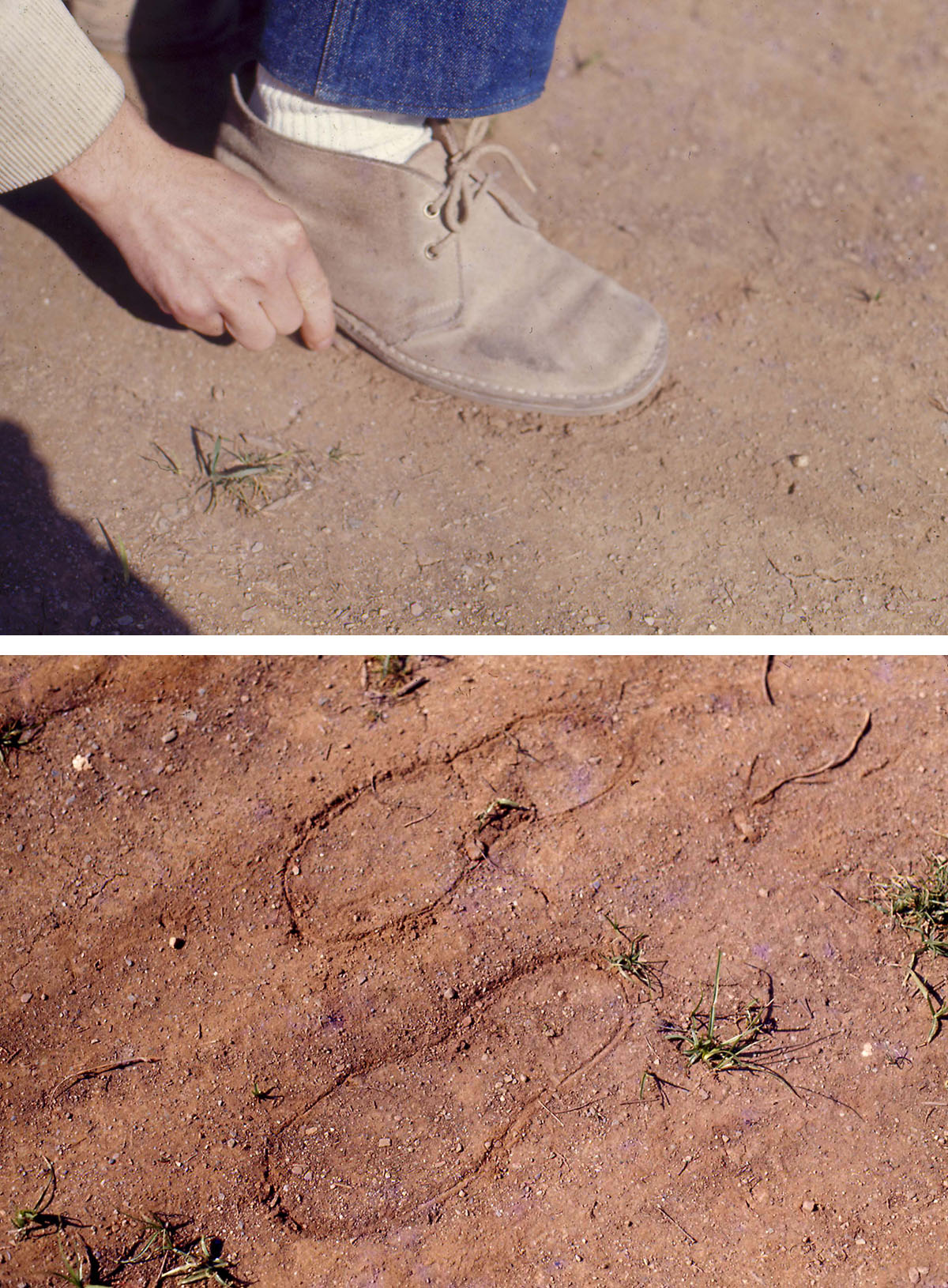
Body art
In body art, students work with the body as a plastic material, which is objectively transformed into an artistic material. To work within this artistic movement, students must blend in with nature.
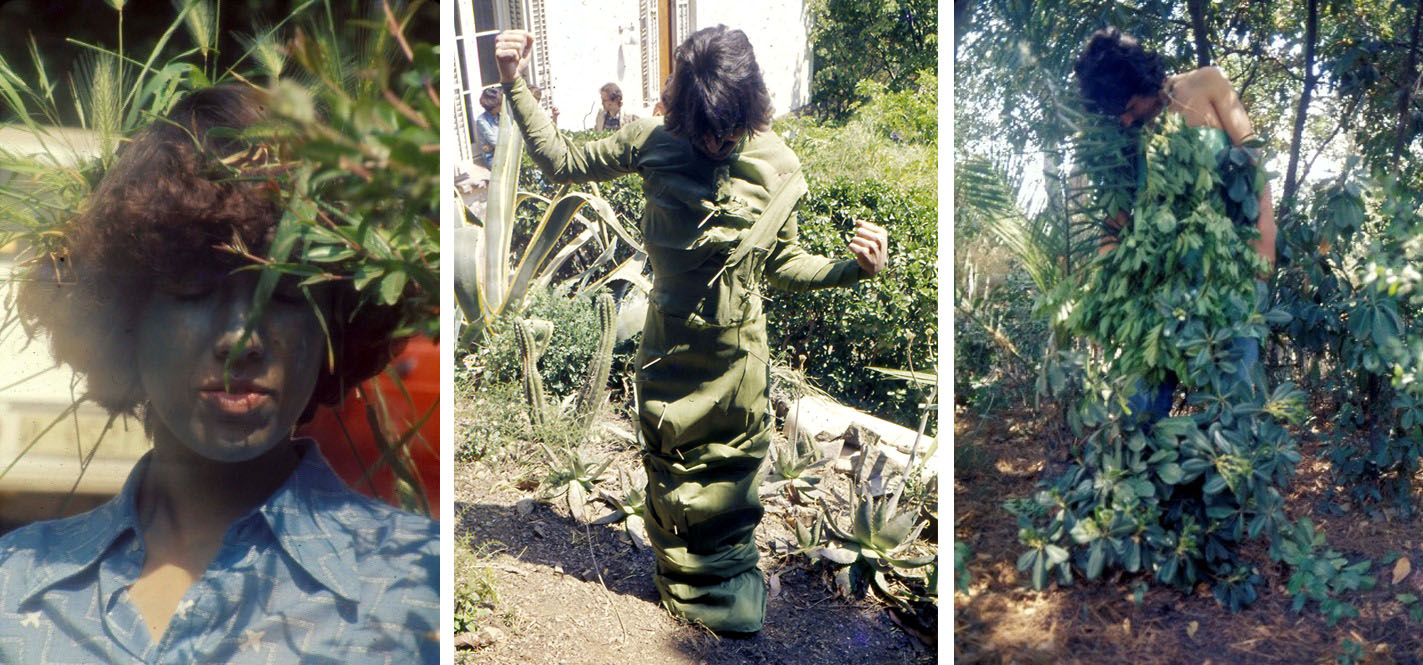
Drawing classes
Botany illustration
Botany studies make it possible to analyse and draw the plants in the garden. This course covered issues of perception and an analytical understanding of the organization of shapes, proportions, and textures through the meticulous observation of the morphological details of the plants. Students including Joaquim Conca, Mercè Iborra, Alejandro Cànovas, Maria Àngels Feliu, Xavier Millan, and Dylan Stone, among others, spent time in Professor Patricio Vélez's classes.
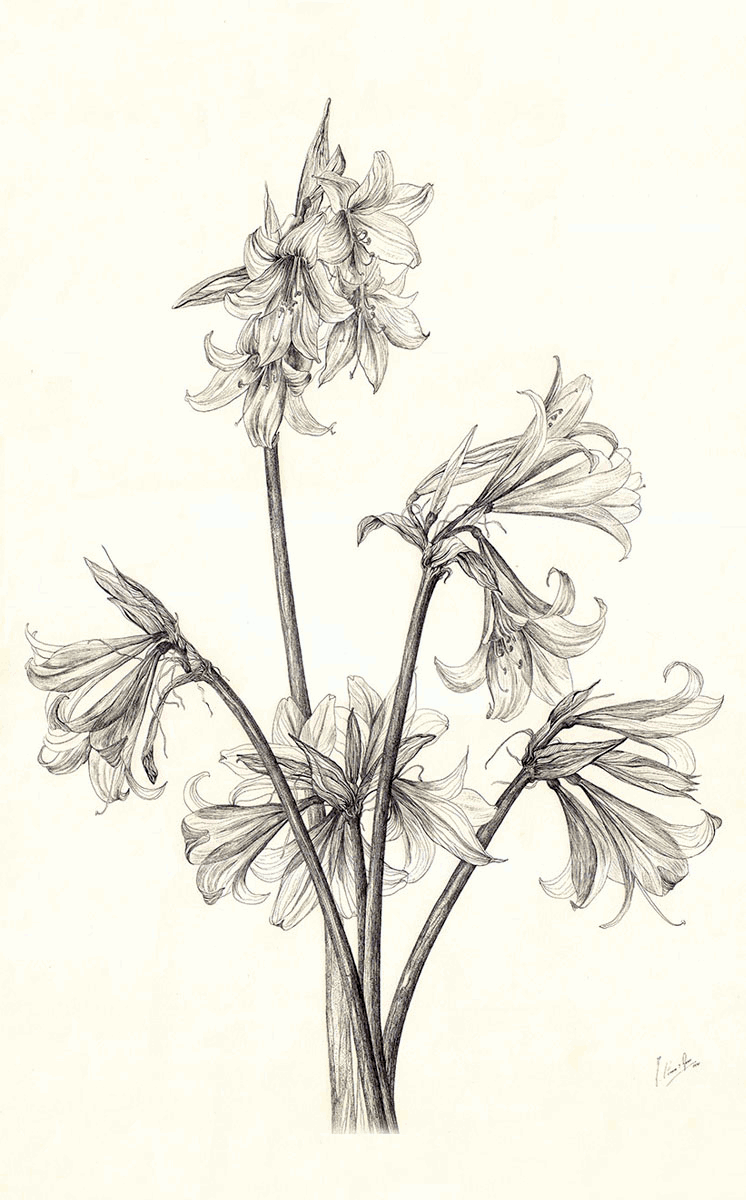
Drawing classes in nature
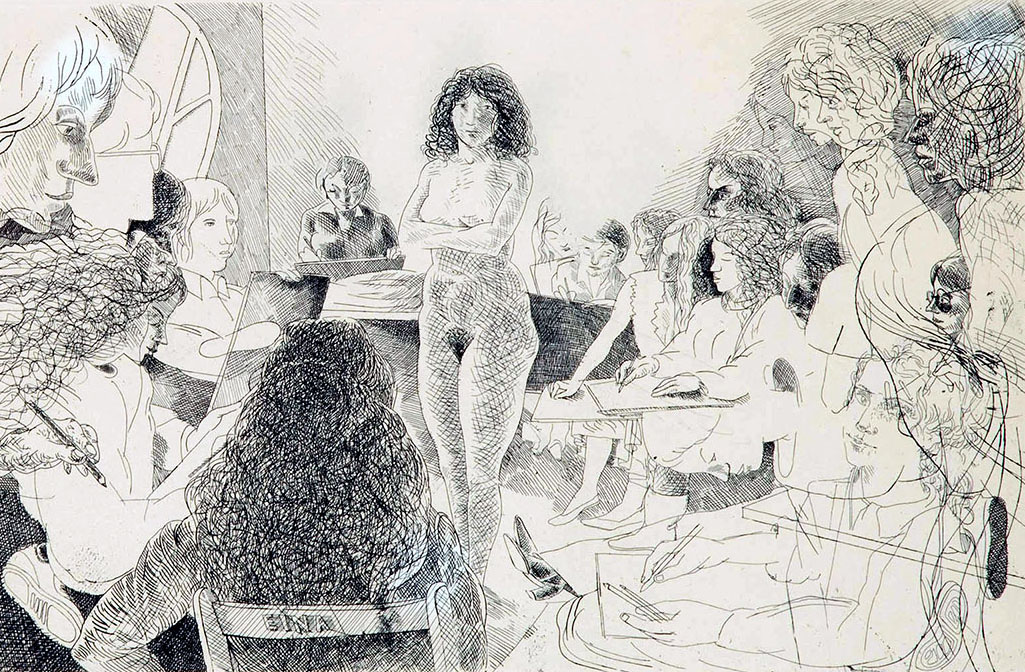 Obra de Francesc Artigau.
Obra de Francesc Artigau.
These classes were taught during the seventies and eighties by Francesc Artigau, Maria Girona, Joan Hernández Pijuan, Xavier Olivé, Montse Ribas, Santi Roquetes, Xavier Serra de Rivera, Francesc Todó, Patricio Vélez, and Antonia Vilá, among others.
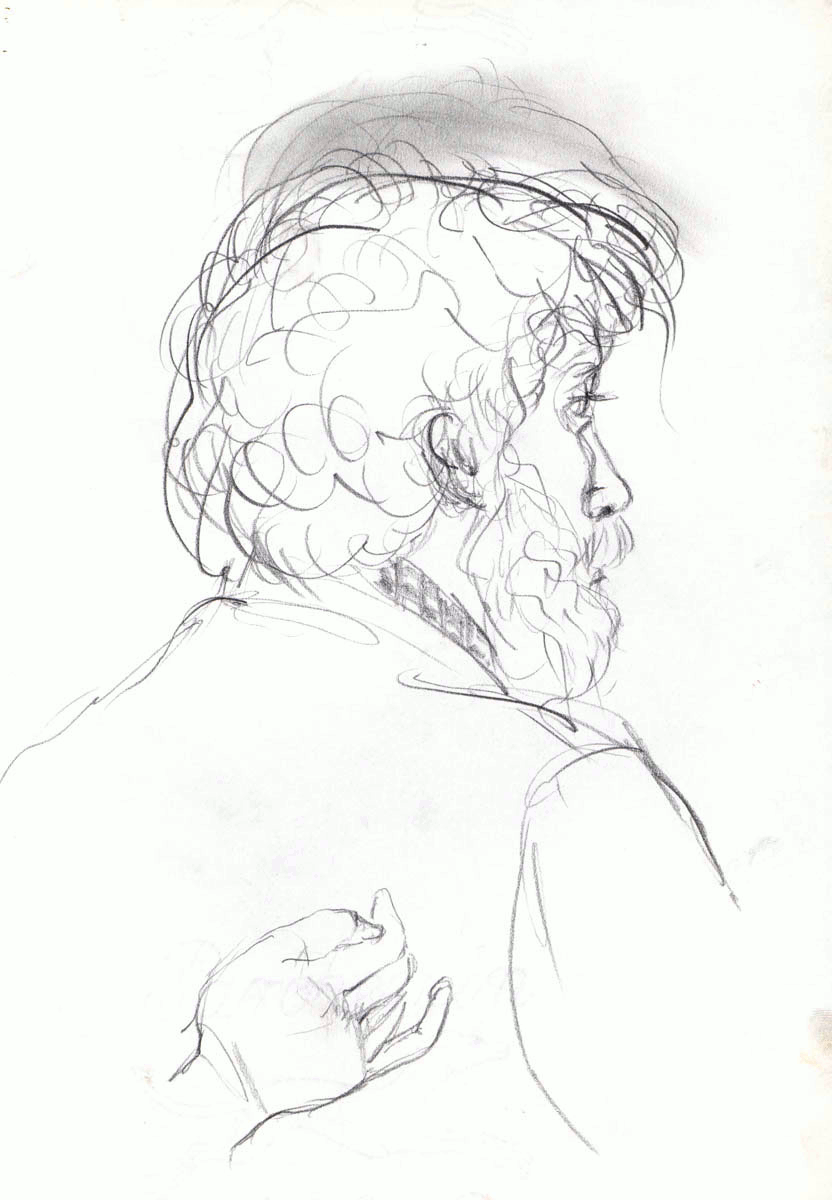
Dibuixos de Xano Armenter, Inés Padrós i Mari Àngels Feliu.
Photography classes
Xavier Miserachs, founder of EINA and a professor at the school until 1973, introduced photography classes to the school. EINA prioritized this subject as a means of artistic expression when it was still an excluded medium in the field of fine arts and university education. It was taught during the seventies by other professors as well, including Paco Llobet (1970-1983), a student from the first graduating class, and Manel Esclusa (from 1978 to present), accompanied by other artists such as Colita, Humberto Rivas, Toni Catany, Oukalele, Jordi Sarrà, Antonio Molinero, and Pere Llunas through seminars, courses, and workshops.
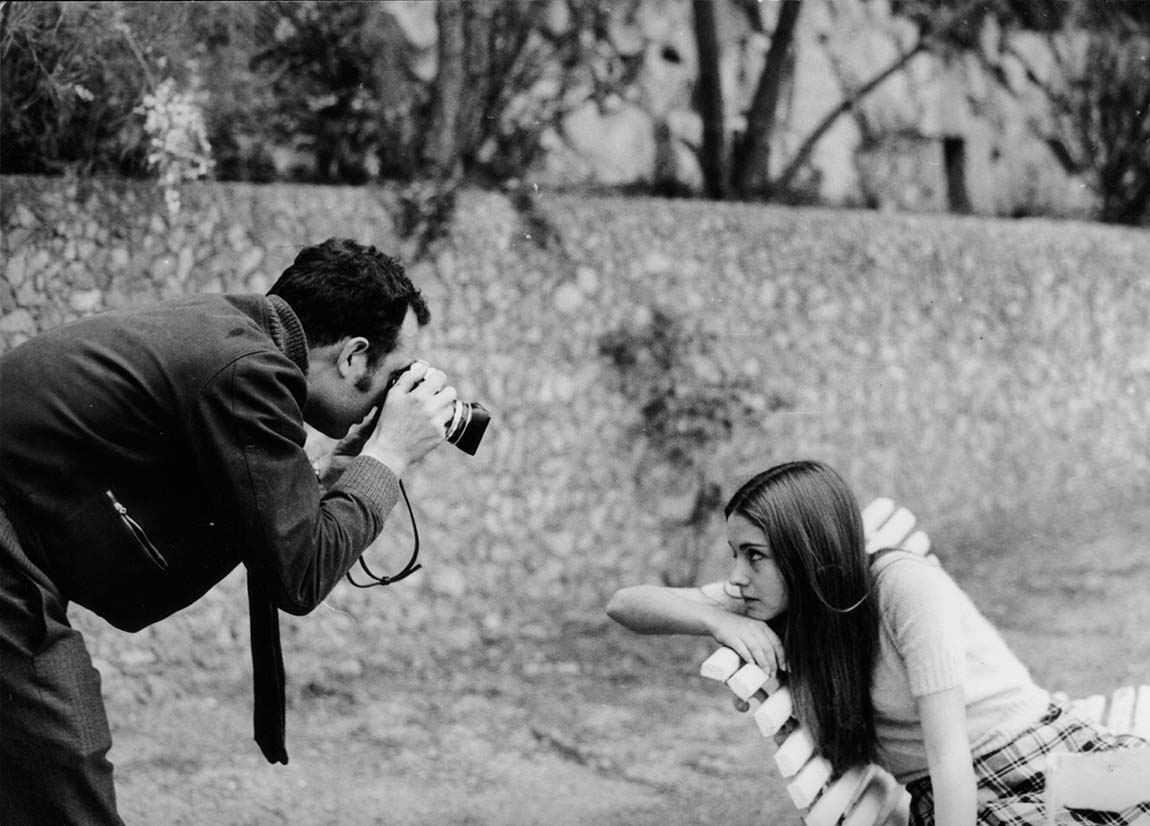
Many sessions were held in the garden, a space that forced students to learn to capture natural light and understand how to adjust the camera's lens. Students often posed as models for other students. In the previous image, Xavier Miserachs is taking a photograph of Clara García.
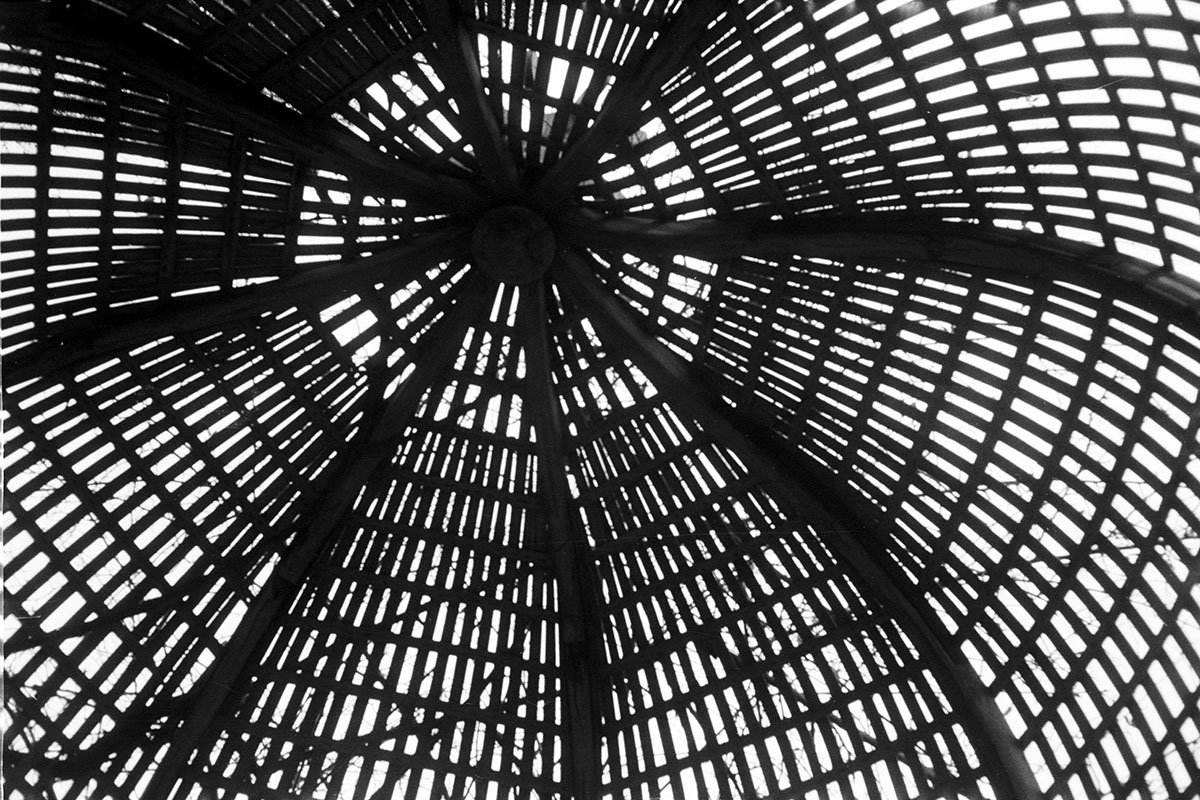 Fotografia de Mireia Riera.
Fotografia de Mireia Riera.
Apart from Paco Llobet, EINA's first graduating class produced other excellent photographers, including José Manuel Ferrater and Manuel Serra.
Seminars, conferences and publications
Landscaping, the garden, and gardening
Landscaping, the garden, and gardening were the subject of seminars and conferences during the 1970s and 1980s.
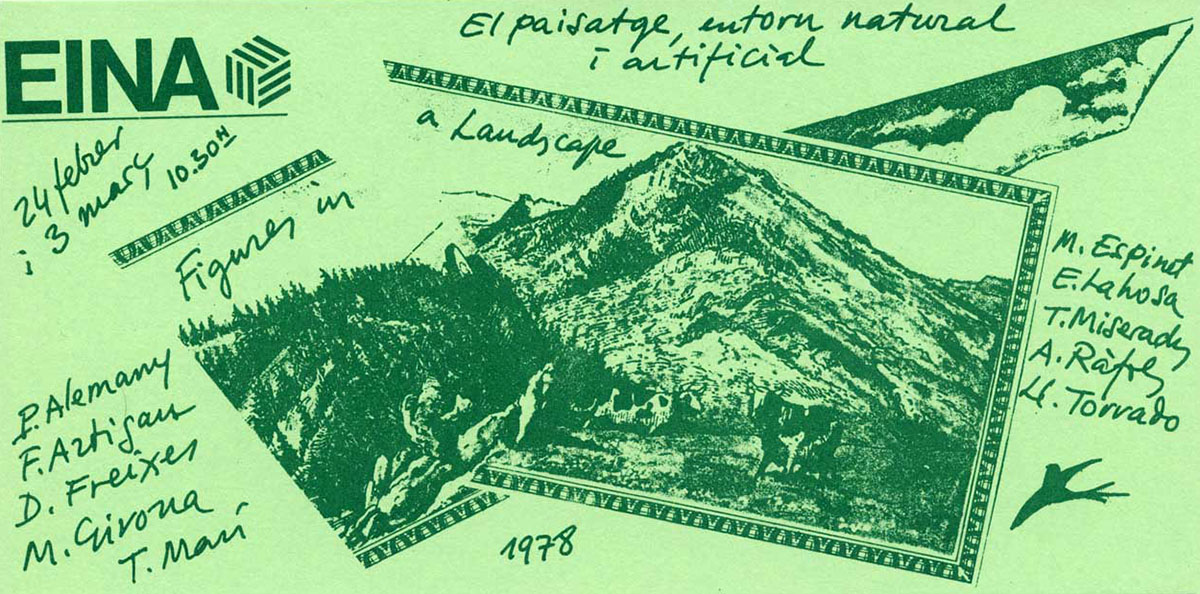
The seminar Figures in a landscape: the landscape, natural and artificial environment by Pep Alemany, Francesc Artigau, Dani Freixes, Maria Girona, Antoni Marí, Miquel Espinet, Joan Enric Lahosa, Toni Miserachs, Albert Ràfols, and Llorenç Torrado was held in 1978.
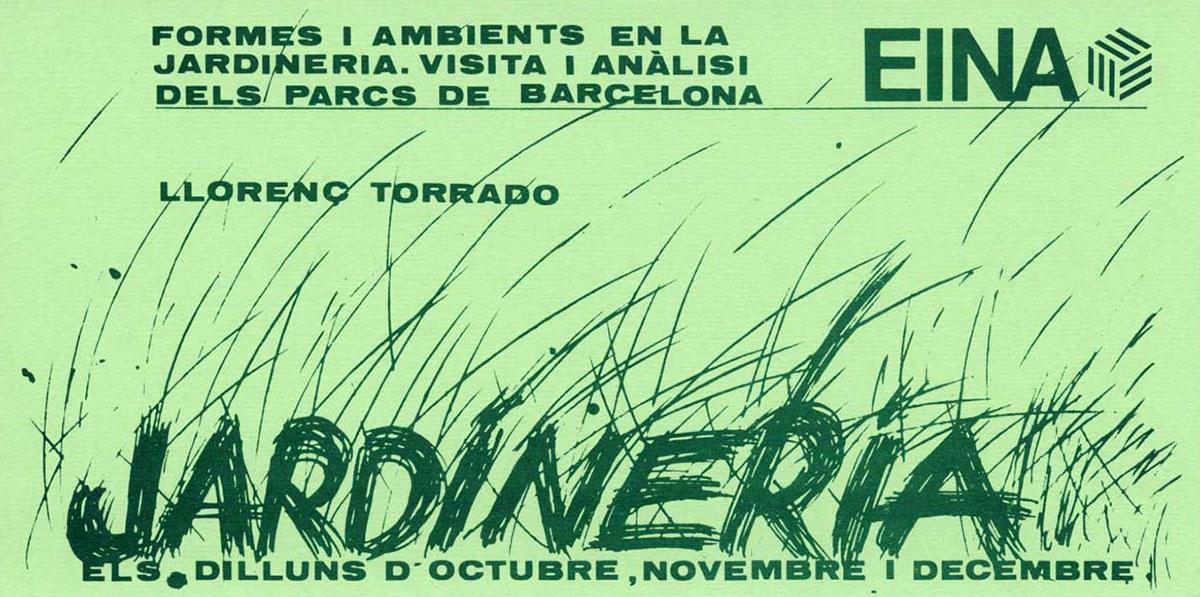
In later years, Llorenç Torrado hosted seminars dedicated to gardening and the garden.
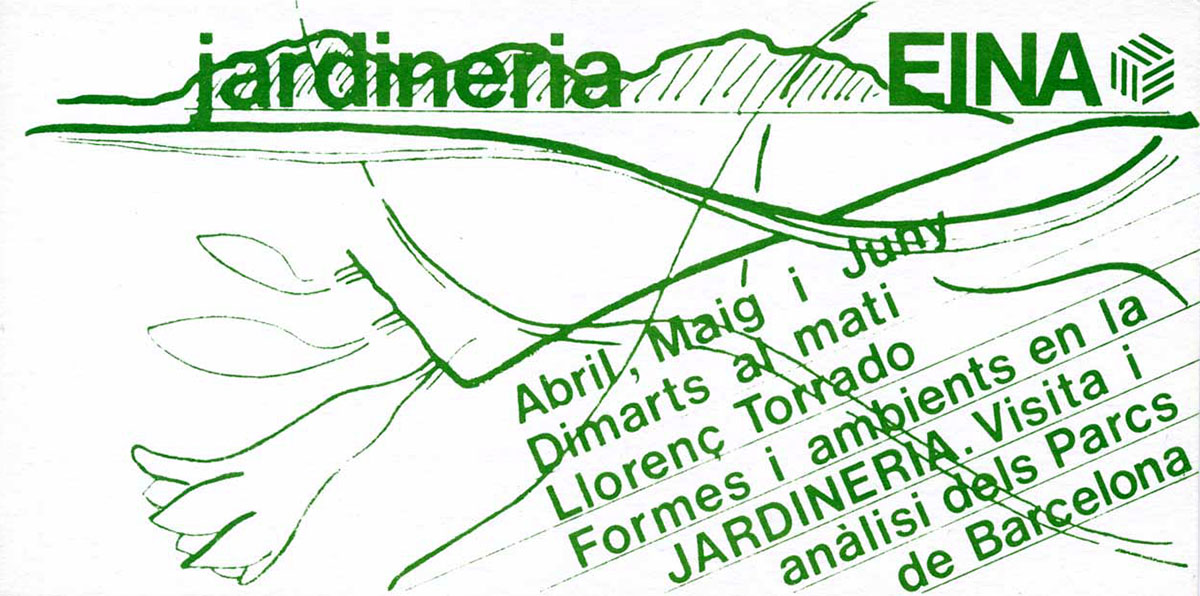
In 1993, as part of the exhibition A look at the garden, organized by EINA and the Girona Association of Architects and coordinated by Patricio Vélez, EINA published a collection of student drawings from the experimental workshop on descriptive drawing based on the direct observation of plants in the EINA Garden, the Montjuïc Gardens, and the Botanical Garden of Barcelona.
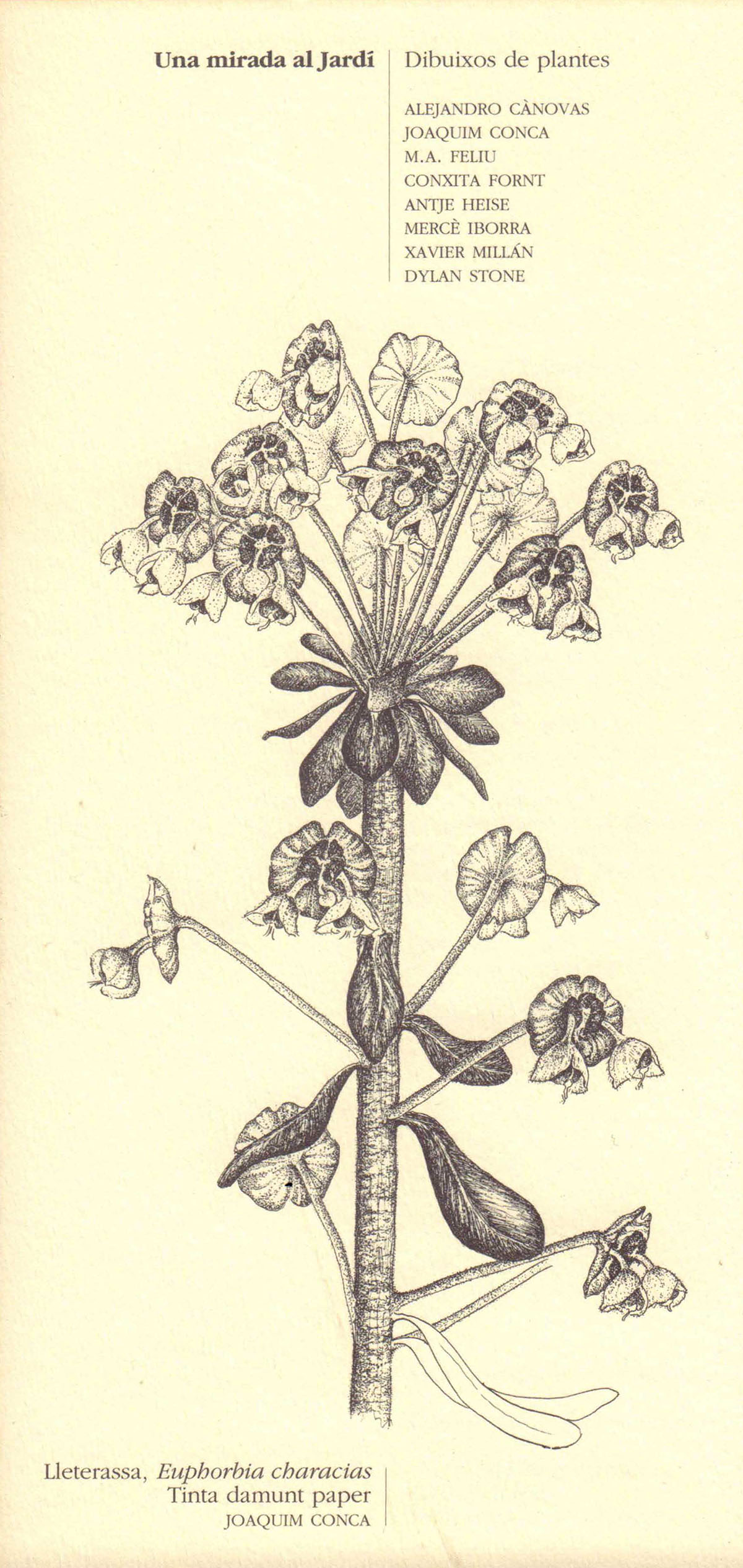
In 1985, EINA published a special issue on gardens in the magazine Papers impresos. The magazine was edited and designed by second-year graphic design students as part of the projects in the class taught by Xavier Olivé.
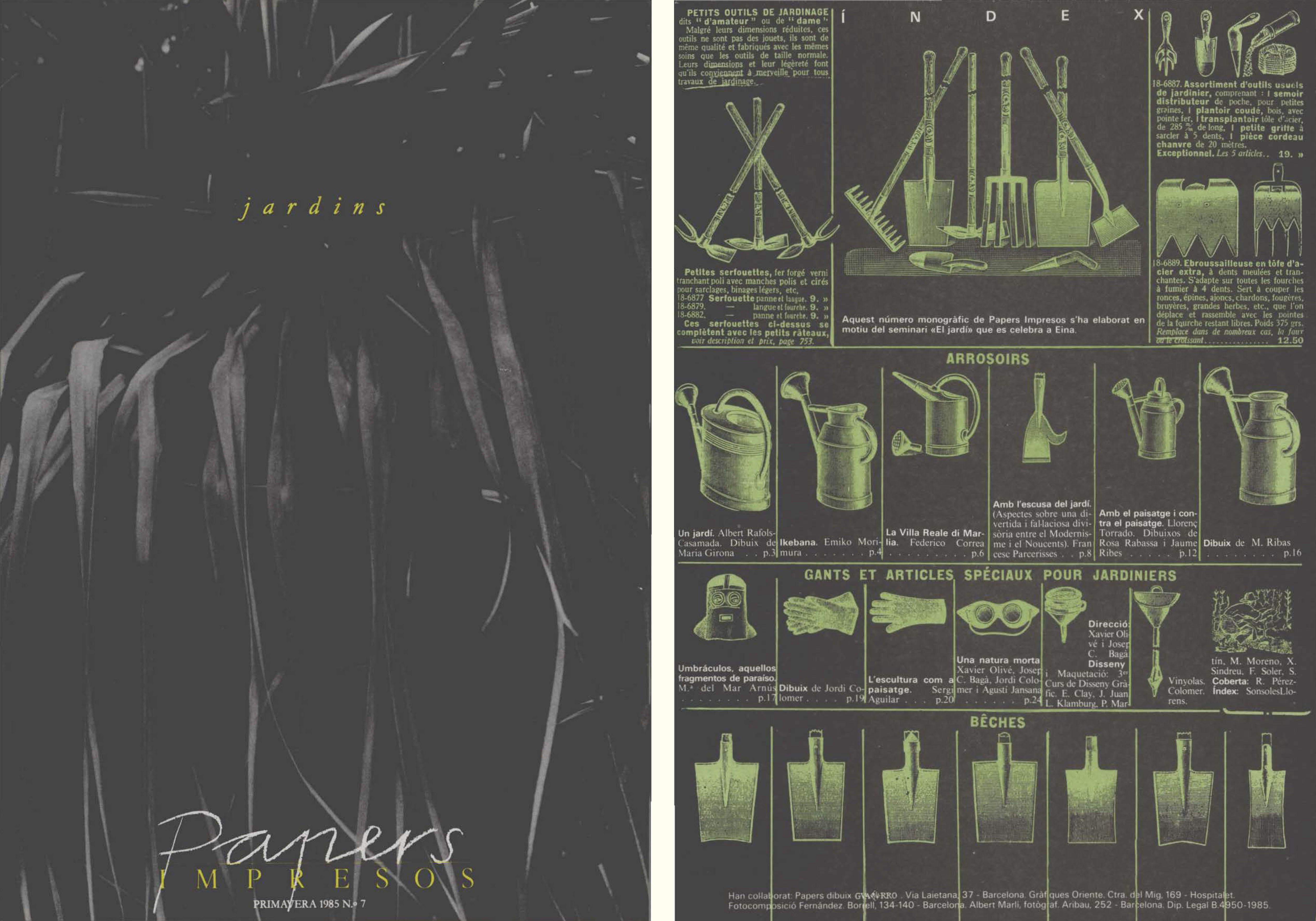
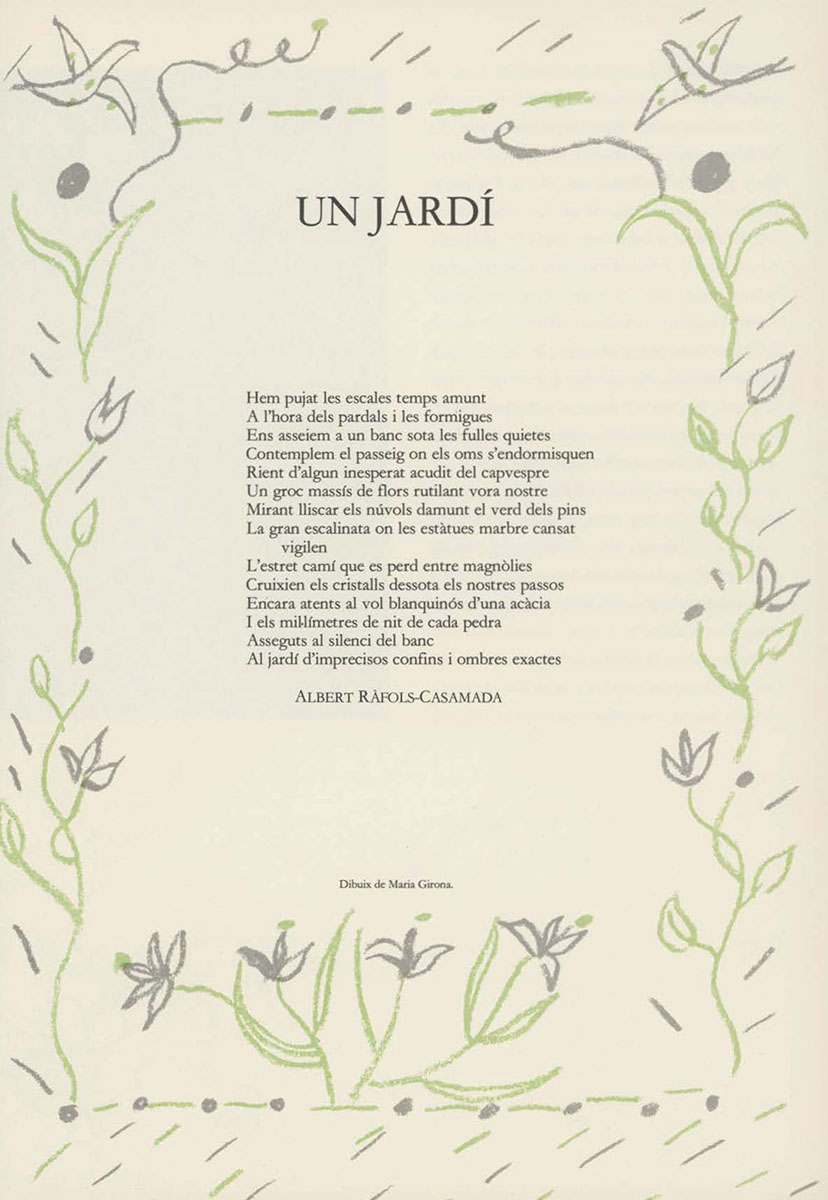
Text: Xavier Olivé and Rubén Alcaraz
Related posts
References
Cirici Pellicer, Alexandre. “Entorn de l’art conceptual”. Serra d’or. Any XIII, núm. 144 (set. 1971, p. 55, 56
